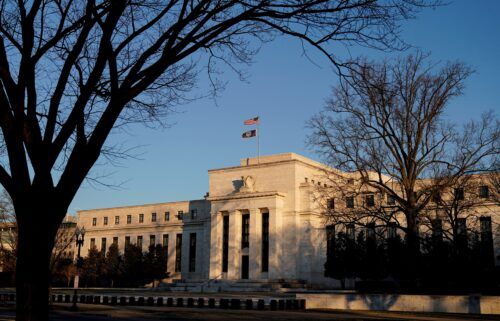Everyone is worried about inflation. Here’s why it’s tracked two different ways
By Elisabeth Buchwald, CNN
New York (CNN) — Inflation is in the hot seat heading into November’s election. But it’s not budging as fast as President Joe Biden would probably like.
The Federal Reserve is tasked with bringing to its 2% target. So how close are we? It depends what metric you’re looking at.
If you’re looking at the Personal Consumption Expenditures price index, the Fed’s preferred inflation gauge, it’s nearly there. The latest reading had prices increasing at a 2.4% annual rate.
But if you’re looking at the latest Consumer Price Index data released Tuesday, prices are up 3.2% for the past 12 months ended in February.
What’s the difference between these two gauges, and what’s behind the diverging reads?
CPI only covers prices consumers pay
As its name suggests, CPI looks at only the prices consumers pay. More specifically, it looks at what the average urban consumer pays for goods and services. PCE, however, looks at prices paid by the government, nonprofit organizations and consumers from all over the country.
Because of that, researchers at the Cleveland Federal Reserve estimate that a quarter of the spending that PCE tracks isn’t captured in CPI.
One big source of variation between the two indexes is that PCE gives a lot more weight to spending on health care services. That’s because it takes into account spending that occurs on behalf of consumers by, for instance, Medicare or employer-provided health insurance companies.
Housing, housing and more housing
The housing sector carries more than four times as much weight in CPI compared to the Fed’s preferred inflation gauge. That means that if housing prices increase by even a small percentage, it could cause the overall index to jump by a significant amount. By contrast, the overall index could cool a lot if housing prices fall even slightly.
The weights for each of the 80,000 items CPI tracks are updated each year based on spending data from the prior two years from consumer expenditure surveys the Census Bureau runs on behalf of the Bureau of Labor Statistics.
Last month, the 4.5% annual increase in shelter prices contributed about two percentage points to the overall rise in inflation.
But, with PCE, housing has a much more limited impact on the inflation index. In January, it contributed less than a percentage point to the overall 2.4% rise in PCE-measured annual inflation.
The weighting for PCE, which changes on a month-to-month basis, is determined by data the Commerce Department collects that is designed to capture how people are spending their money and how that changes over time. But a lot of that data comes from business surveys such as the Census Bureau’s monthly retail sales report.
One big advantage of the month-to-month weighting change is that it is able to capture substitution effects, like when consumers purchase more margarine because butter prices are higher.
Like housing, gas has a much heavier weight in CPI compared to PCE. From January to February, gas prices rose by 3.8% on a seasonally adjusted basis. That was one of the main reasons why CPI jumped by 0.4% on a monthly basis in February.
The latest PCE data from January had gas prices falling by 5.2% from December. (CPI also found gas prices fell that month.)
Both indexes are faulted for using this metric to calculate housing inflation
Both indexes use a widely criticized metric called owners’ equivalent rent (OER) to track housing inflation. OER is essentially how much money you could earn from renting out your house if you own it.
For renters, CPI and PCE look at how much people pay for rent in aggregate.
The wedge between OER and rent was especially large in January, causing some economists to question if one of the sets of data was flawed, since theoretically what people pay for in rent should be similar to what homeowners would get from renting their homes.
One major issue with OER and the rent data is that these numbers don’t consider how much people are being offered on new leases. That matters because the rate at which new leases are rising is much slower than existing leases.
For instance, Zillow data from February suggests the median household is dedicating 29% of their income to the cost of a new rental. That’s just a tenth of a percentage point higher compared to last February.
But it can often take months for these trends to show up in either the PCE or CPI housing indexes.
Another issue with using OER to track housing inflation is that it doesn’t really affect homeowners.
As Bank of America economists pointed out in a recent note, “most homeowners are locked in to long-term mortgages.”
“The homeownership rate in the US is close to two-thirds, 40% of which have no mortgage,” they said. “Of homeowners with a mortgage, the majority have a mortgage below 4%. These households have therefore not seen a change in monthly payments for housing, unlike renters.”
The-CNN-Wire
™ & © 2024 Cable News Network, Inc., a Warner Bros. Discovery Company. All rights reserved.

